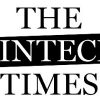Club.noww.in
2024 is proving another standout year for the regulatory space, finding itself under the spotlight, for better and worse reasons. This month, The Fintech Times will look at some of the biggest issues regarding compliance and financial rules, as well as the solutions hoping to ease the compliance journey for firms and make the fintech world fairer and safer.
Throughout this month, we’ve placed a lot of focus on the world of regulation and compliance. Having explored the biggest compliance challenges, opportunities and future trends, we’re now looking at the role supervisory technology (suptech) tools can play in changing the regulatory landscape.
The European Central Bank (ECB) has been developing suptech tools in collaboration with a number of supervisors in an effort to address “pressing needs”. Of the tools that have already gone live, it says they make the daily work of supervisors easier and are already making an impact.
 Henry Balani, global head of industry and regulatory affairs at Encompass Corporation
Henry Balani, global head of industry and regulatory affairs at Encompass Corporation“Implementing suptech tools presents both challenges and opportunities for regulatory authorities,” explains Henry Balani, global head of industry and regulatory affairs at Encompass Corporation. “One key challenge includes managing the costs associated with advanced technologies since implementing suptech tools requires significant investment in technology, infrastructure, and skilled personnel.
“However, the implementation also presents a range of opportunities. These include enhanced data-driven decision-making, increased efficiency through automation, as well as the ability to proactively identify regulatory risks, allowing regulators to become more agile and effective in monitoring compliance.”
With such challenges and opportunities do suptech tools have a significant role for regulatory authorities? We hear from more industry leaders to find out.
Hurdles to overcome
Gerben Schreurs, partner at the Forensic Risk Alliance, breaks down the largest challenge facing the implementation of suptech tools: “The biggest challenge for suptech would be the direct access to the underlying data.
 Gerben Schreurs, partner at the Forensic Risk Alliance
Gerben Schreurs, partner at the Forensic Risk Alliance“Currently, supervision is still dependent on submissions from banks that have undergone review by subject matter experts to reflect the reality. This ensures a certain level of quality.
“If suptech is used for direct access to the underlying data (e.g. credit book for assessing large exposure limits) there is a strong dependency on the quality of the underlying data and the variety of the different institutions’ systems.
“If this hurdle would be overcome (using proven data standardisation methods) the biggest impact would be the opportunity for timely detection of potential issues by the supervisor and benchmarking capabilities across institutions to detect anomalies that can impact financial stability.”
A balancing act
 Remonda Kirketerp-Møller, CEO of Muinmos
Remonda Kirketerp-Møller, CEO of Muinmos“The implementation of suptech tools offers both challenges and opportunities for regulatory authorities,” adds Remonda Kirketerp-Møller, CEO of Danish regtech Muinmos. “One key challenge is the integration of these advanced technologies with legacy systems, which may not be equipped to handle the volume and complexity of modern financial data.
“Additionally, ensuring the accuracy and reliability of AI-driven insights requires regulators to upskill their workforce and adopt a data-driven mindset.
“However, the opportunities are substantial: suptech tools enable regulators to monitor financial markets in real-time, identify risk trends, and intervene proactively to prevent crises. Furthermore, suptech can streamline reporting processes, reduce compliance costs for institutions, aid in audits, and ultimately foster a more resilient financial ecosystem.”
The significant benefits of suptech
 Rokas Muraška, CSRO at PAYSTRAX
Rokas Muraška, CSRO at PAYSTRAXFinally, Rokas Muraška, (CSRO) chief security and risk officer at PAYSTRAX, explains that, while challenges are inevitable, the benefits of suptech tools could prove hugely significant.
“One of the key challenges in implementing suptech tools is managing cybersecurity risks, as regulatory bodies gain access to vast amounts of sensitive financial data. Ensuring the protection of this data is paramount, given the potential exposure to cyber threats.
“However, suptech tools offer significant benefits by enabling regulatory authorities to access and analyse real-time data from financial institutions, facilitating faster and more proactive responses to emerging risks, market fluctuations, and potential crises.
“Additionally, these tools enhance transparency in the regulatory process by providing data-driven insights that improve decision-making and risk assessments, fostering greater clarity and accountability in supervisory practices.”
The post Leveraging Suptech: How Can Advanced Tools Enhance Regulatory Efficiency and Risk Detection? appeared first on The Fintech Times.

 2 days ago
4
2 days ago
4











 English (US)
English (US)